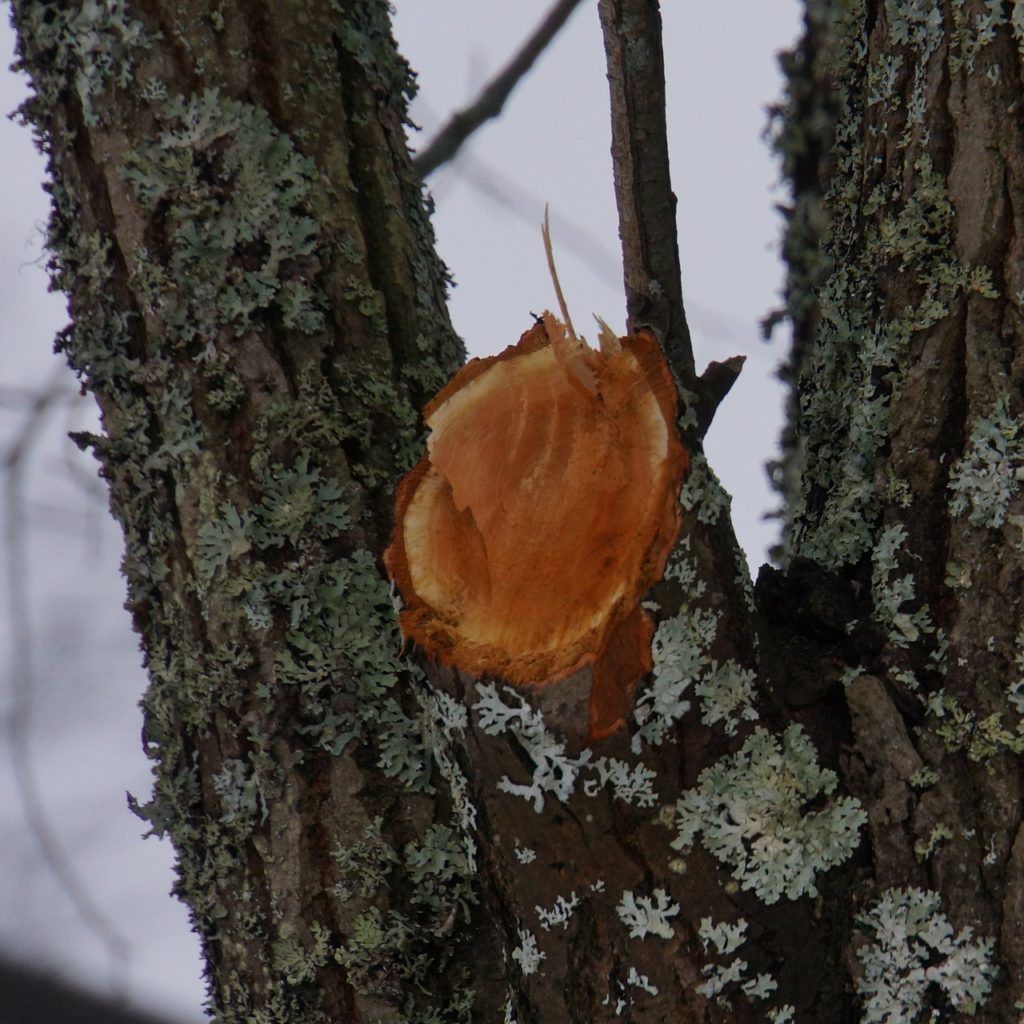When properly administered, pruning is a highly beneficial horticultural practice. It aids in the development of trees, ensuring that they grow in a healthy, balanced manner. However, there are a number of pruning techniques that can be detrimental to trees. The following are some of the more harmful pruning practices, and their effects on trees.
Tree Topping
Tree topping, also called heading, tipping, hat-racking, and rounding over, is a pruning method that is used to reduce the height of a tree, or decrease its crown width. It involves the removal of a large section of a tree’s crown within the upper portion of the tree. Branches are reduced to stubs or cut back to lateral branches that are not large enough to assume the terminal role. Topping is often considered a form of pruning malpractice, as it leads to the deformation of trees, destroying their branch structure.
One of the most damaging aspects of topping is its reduction of a tree’s leaves. Topping results in the removal of fifty to one hundred percent of a tree’s leaf-bearing crown. The loss of growth prevents the tree from effectively photosynthesizing, stymieing its development. This prompts the tree to activate its dormant buds. As they awaken, the buds begin producing small epicormic sprouts, which establish weak attachments in the outermost layers of the tree. The sprouts grow quickly, becoming increasingly perilous as they expand. Their fragile nature makes them prone to breaking, increasing the potential for limb failure.
The reduction in leaves also renders the bark tissue susceptible to sunburn. This can lead to the development of cankers, which often cause bark splitting, wood cracking, and ultimately, branch failure. The severity of the wound debilitates the tree, increasing its vulnerability to insects and diseases.
Lion’s Tailing
Lion’s tailing is another practice that severely damages trees. It is when the inner foliage, branches, and limbs are stripped from a tree’s canopy, resulting in a bare trunk that is sparsely foliaged at the top. When subjected to this type of pruning, trees are altered in such a way that they resemble a lion’s tail.
Lion’s tailing reduces the tree’s capacity for photosynthesis, and restricts its ability to distribute water and nutrients properly. It also exposes bark tissue to the elements, increasing its vulnerability to seasonal injuries. For example, the increased sunlight on the interior of the tree can cause a type of winter injury called sun scald.
Improper Pruning Cuts
An overview of the improper pruning cuts that you don’t want to receive from doing yourself or when hiring out.
Flush Cutting
Flush cutting is a pruning technique where branches are cut below the branch collar, usually along the bark ridge, or trunk. This type of pruning results in the removal of the branch collar, an area of tissue containing cells that specialize in mending wounds. The cells form a callus around the wound that prevents diseases from entering the trunk. Flush cuts eliminate these cells, creating a wound that leaves the tree vulnerable to insects and diseases. It also weakens the tree’s branch structure.
Stub Cutting
Stub cutting occurs when branches are pruned too far from the stem, leaving a branch stub. The branch tissue typically dies, delaying or preventing the formation of woundwood. This causes the wound to remain open, leaving the tree susceptible to entry from canker fungi and decay organisms. Branch stubs can also cause structural damage such as wood cracking, and bark tearing.
Lopping
Lopping is when a branch is cut anywhere other than at a union or node. It often results in the development of water sprouts: tiny branches that grow upwards, absorbing water and nutrients from the tree. They tend to be more fragile than the rest of the tree, and can easily snap off when subjected to windy or icy conditions. Lopping may also leave trees more exposed to insects and diseases.
Bark tearing
Bark tearing can occur when large branches are not removed properly. This causes heavier branches to snap and fall. It may also result in tearing or splitting of the main trunk.
Excessive Pruning
No more than one quarter of a tree’s crown should be removed at one time. When too much of the canopy is removed, the tree becomes structurally and nutritionally deficient. This contributes to the tree’s decline, eventually resulting in tree or branch failure. Excessive pruning of stressed trees can exacerbate any existing conditions.
Improper Timing
Every tree has an ideal time of the year when it should be pruned. For example, flowering trees should not be tended to until after they have bloomed in spring. Pruning them prematurely removes their buds, and discourages growth. Pruning in the fall can stimulate new growth that is easily damaged when the winter frost occurs. Some species will ooze sap if pruned in winter. While this will not harm them, it can create an unsightly mess. Determining the proper time to prune a tree will help avoid any unnecessary tree injuries.


